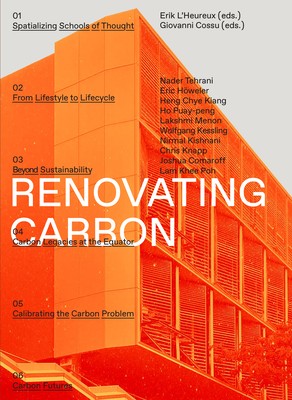
- We will send in 10–14 business days.
- Author: Erik L'Heureux
- Publisher: Oro Editions
- ISBN-10: 1954081448
- ISBN-13: 9781954081444
- Format: 19.1 x 25.9 x 1.8 cm, minkšti viršeliai
- Language: English
- SAVE -10% with code: EXTRA
Reviews
Description
With global building stock projected to double in the next two decades, the challenge of reducing the carbon expenditure becomes a planning-design-construction opportunity. This urgently warrants an assessment of existing architectural practices and employment/usage of building systems, by professionals and experts to facilitate sustainable and optimistic experimentations. It is high time that we rethink the creative aspects of not just technology and buildings systems, but also the culture and the foundation of the building industry. The book begins to explore these facets of the complex relationship between the built environment, carbon mitigation and climate change through the low-carbon adaptive re-use of SDE1/3 of the School of Design and Environment (SDE) at the National University of Singapore (NUS). The essays / articles extrapolate key themes on adaptive re-use to the hot and wet atmospheres on the urbanizing Equator. Unlike new-builds, the design and development of adaptive re-use projects straddle the existing realities of the built form and future projections of building use and operations.
EXTRA 10 % discount with code: EXTRA
The promotion ends in 21d.13:54:45
The discount code is valid when purchasing from 10 €. Discounts do not stack.
- Author: Erik L'Heureux
- Publisher: Oro Editions
- ISBN-10: 1954081448
- ISBN-13: 9781954081444
- Format: 19.1 x 25.9 x 1.8 cm, minkšti viršeliai
- Language: English English
With global building stock projected to double in the next two decades, the challenge of reducing the carbon expenditure becomes a planning-design-construction opportunity. This urgently warrants an assessment of existing architectural practices and employment/usage of building systems, by professionals and experts to facilitate sustainable and optimistic experimentations. It is high time that we rethink the creative aspects of not just technology and buildings systems, but also the culture and the foundation of the building industry. The book begins to explore these facets of the complex relationship between the built environment, carbon mitigation and climate change through the low-carbon adaptive re-use of SDE1/3 of the School of Design and Environment (SDE) at the National University of Singapore (NUS). The essays / articles extrapolate key themes on adaptive re-use to the hot and wet atmospheres on the urbanizing Equator. Unlike new-builds, the design and development of adaptive re-use projects straddle the existing realities of the built form and future projections of building use and operations.


Reviews